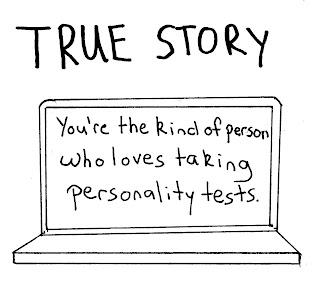A human being has so many skins inside, covering the depths of the heart. We know so many things, but we don't know ourselves! Why, thirty or forty skins or hides, as thick and hard as an ox's or bear's, cover the soul. Go into your own ground and learn to know yourself there.
~ Meister Eckhart
 In addition to being obsessed with really cool space-saving furniture, I am also addicted to personality assessments! I love reflecting on various descriptions of myself and meditating on why I see the world - and engage with it - the way that I do. The more I study these profiles, the more I am able to understand and empathize with those around me and to work with them in a way that is mutually beneficial.
In addition to being obsessed with really cool space-saving furniture, I am also addicted to personality assessments! I love reflecting on various descriptions of myself and meditating on why I see the world - and engage with it - the way that I do. The more I study these profiles, the more I am able to understand and empathize with those around me and to work with them in a way that is mutually beneficial. The important thing to remember about all assessments is that they do not measure trait, ability, or character; no type is inherently better than another and no type is distinctly masculine or feminine. Various societies, families, and traditions may value certain types over others (or expect certain genders to behave according to certain types), but the objective nature of each personality is not more or less "good".
Perhaps the most widely referenced assessment is the Myers Briggs Type Indicator. The MBTI identifies four preferences that inform an individual's perception and judgment: energy flow (Extroversion/Introversion), information gathering (Sensory/Intuition), decision making (Thinking/Feeling), and structuring one's world (Judging/Perceiving). The MBTI is not available for free but here is one site that provides an effective assessment. I highly recommend their profiles of the 16 personality types; even though I am familiar with all 16, I found their descriptions to be quite informative!
The PACE Color Palette is a complementary tool to the MBTI and focuses on the 4 temperaments, which closely correlate with preference combinations within the MBTI. This is most often used in educational or business settings and I have not been able to find a free online source for personal use.
I confess that I am not as familiar with the Enneagram assessment and have not officially taken one, though by reading the 9 descriptions and completing their free sample test, I can easily identify my basic personality type. The Enneagram, however, adds layers of complexity to this type by grouping personalities into three Centers (Thinking, Feeling, Instinctive) that revolve around emotional responses related to our core selves (Anxiety, Shame, Anger - respectively). The Enneagram also identifies wings - the "second side" of a personality, which complements it and adds important, sometimes contradictory, elements to your total personality. More recently, a few Enneagram instructors have added 9 Levels of Development to help understand how (un)healthy an individual is with respect to her personality. You could easily get lost on the Enneagram website if you wanted to read all of the information they make available and writing about all this makes me want to take a full version of the test!
While not a personality assessment, the Clifton Strengths Finder is one of the most exciting tools for appreciating and developing your innate talents. This test is actually based on positive psychology - focus on the good! - so if you find yourself discouraged by any of these other assessments, I encourage you to find someone able to help you process the results of the Strengths Finder and start exploring your gifts!
What am I missing? What assessments do you love that I didn't mention?
And as to not keep those of you who were wondering in suspense, I am an ENTP, dominant red with streaks of green (PACE), The Challenger 8, with Ideation, Strategic, Activator, Input, and Command strengths.
What's your type?
No comments:
Post a Comment